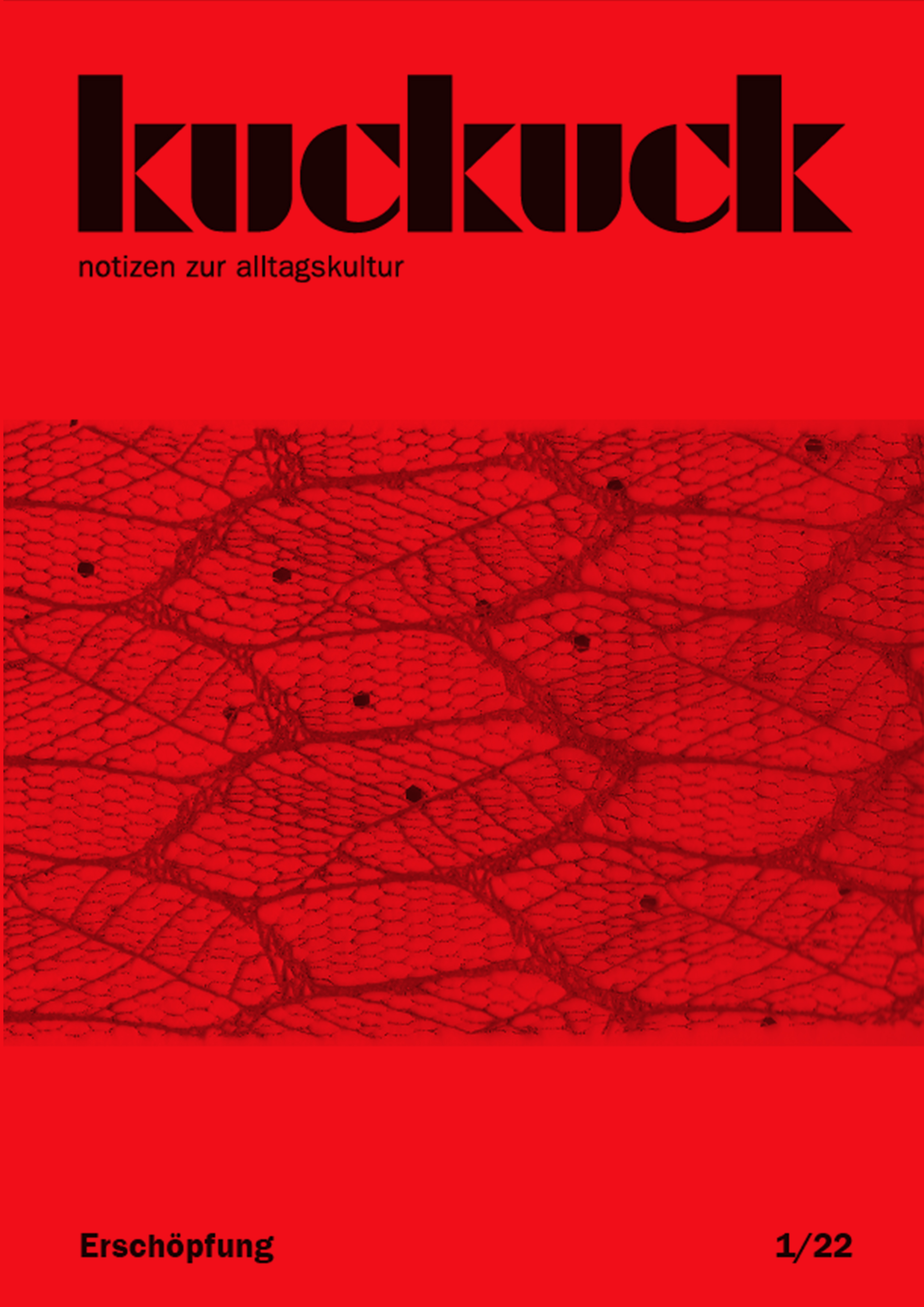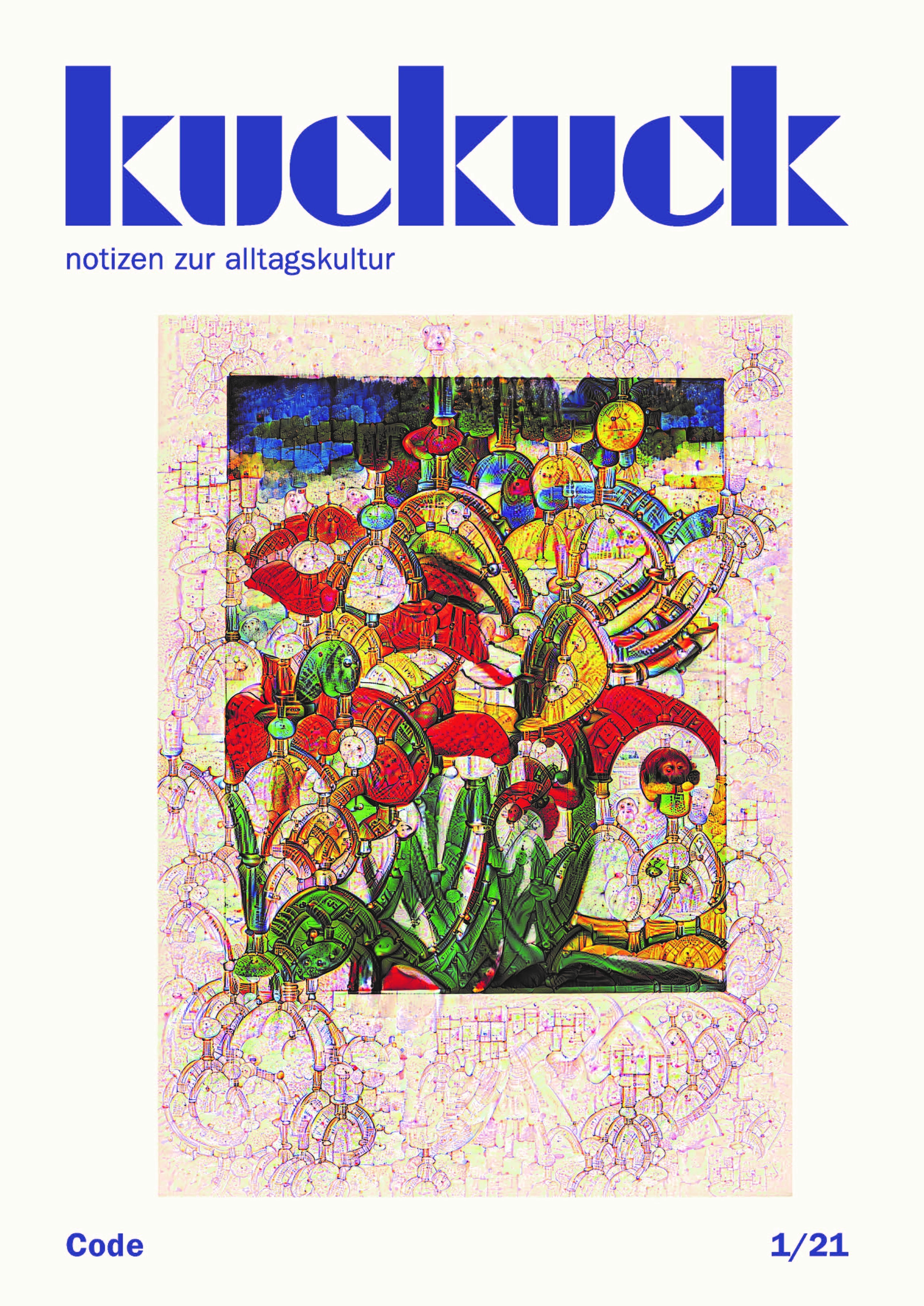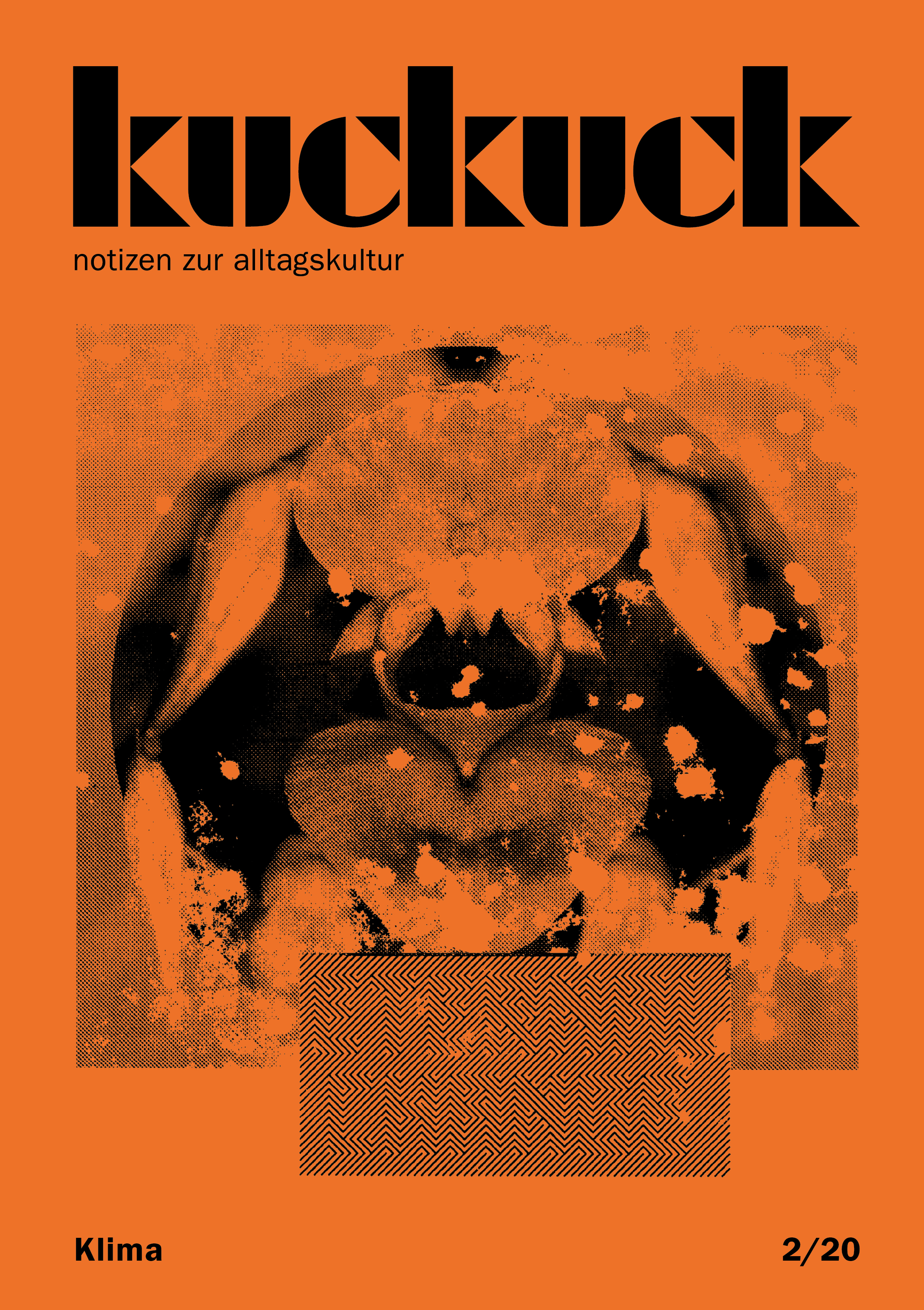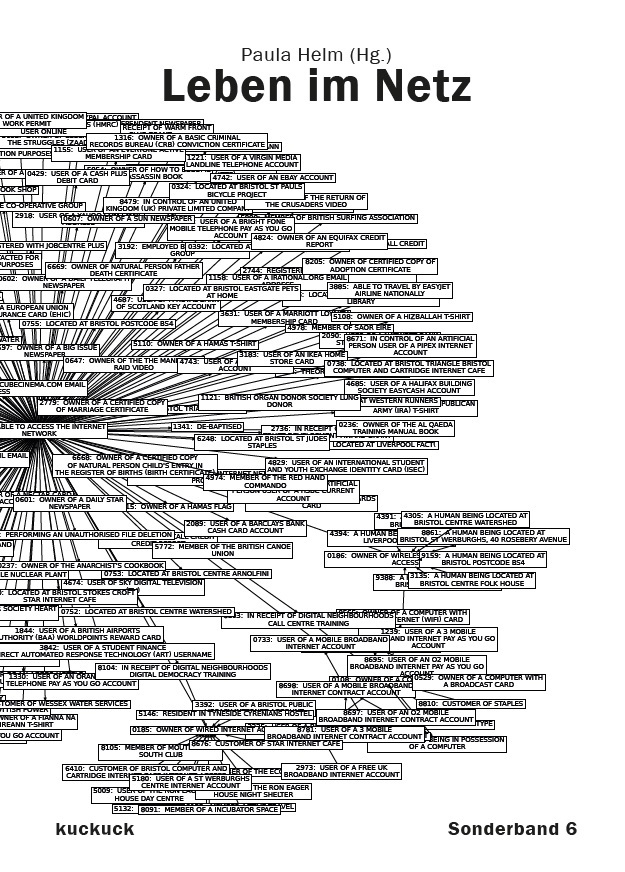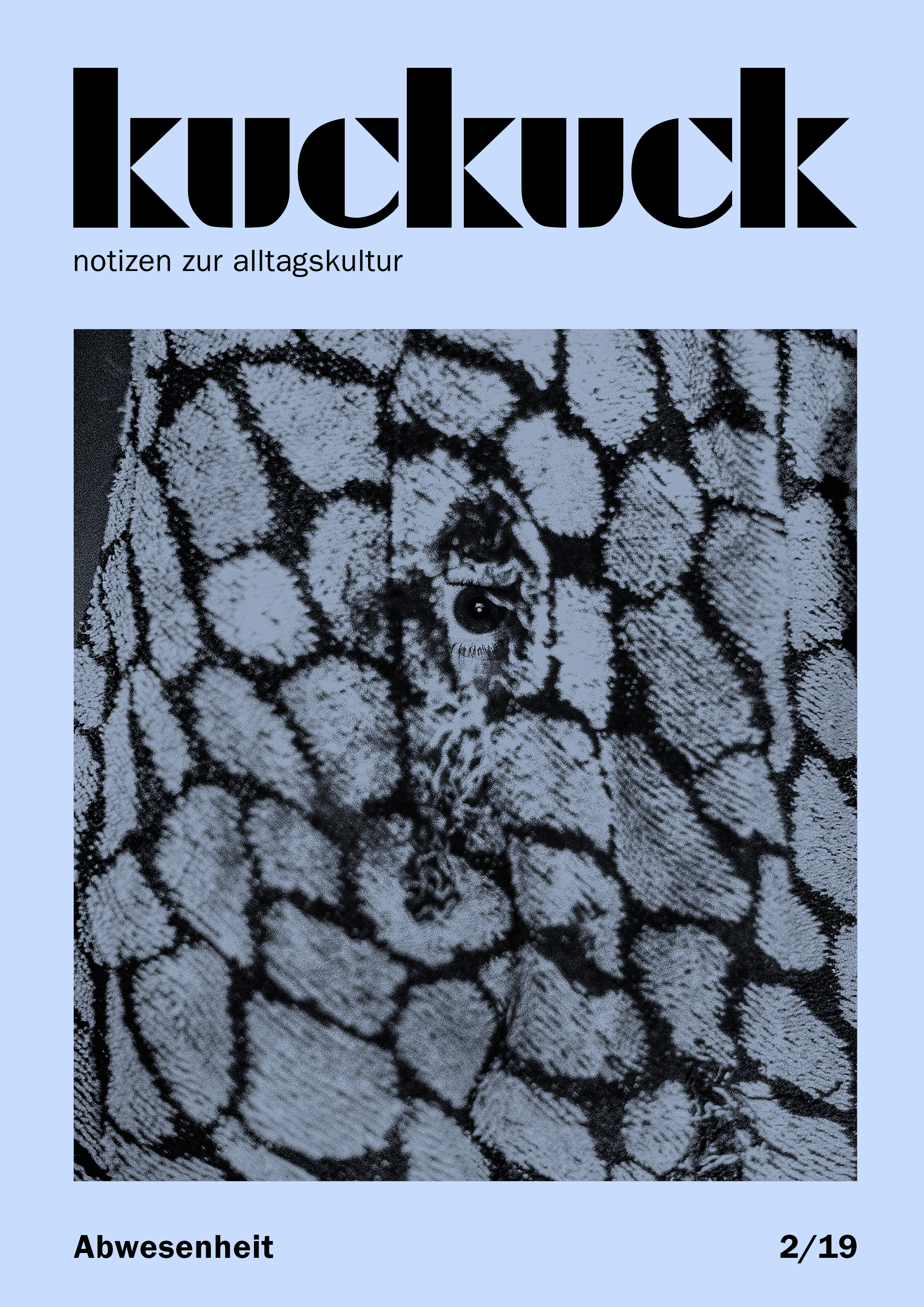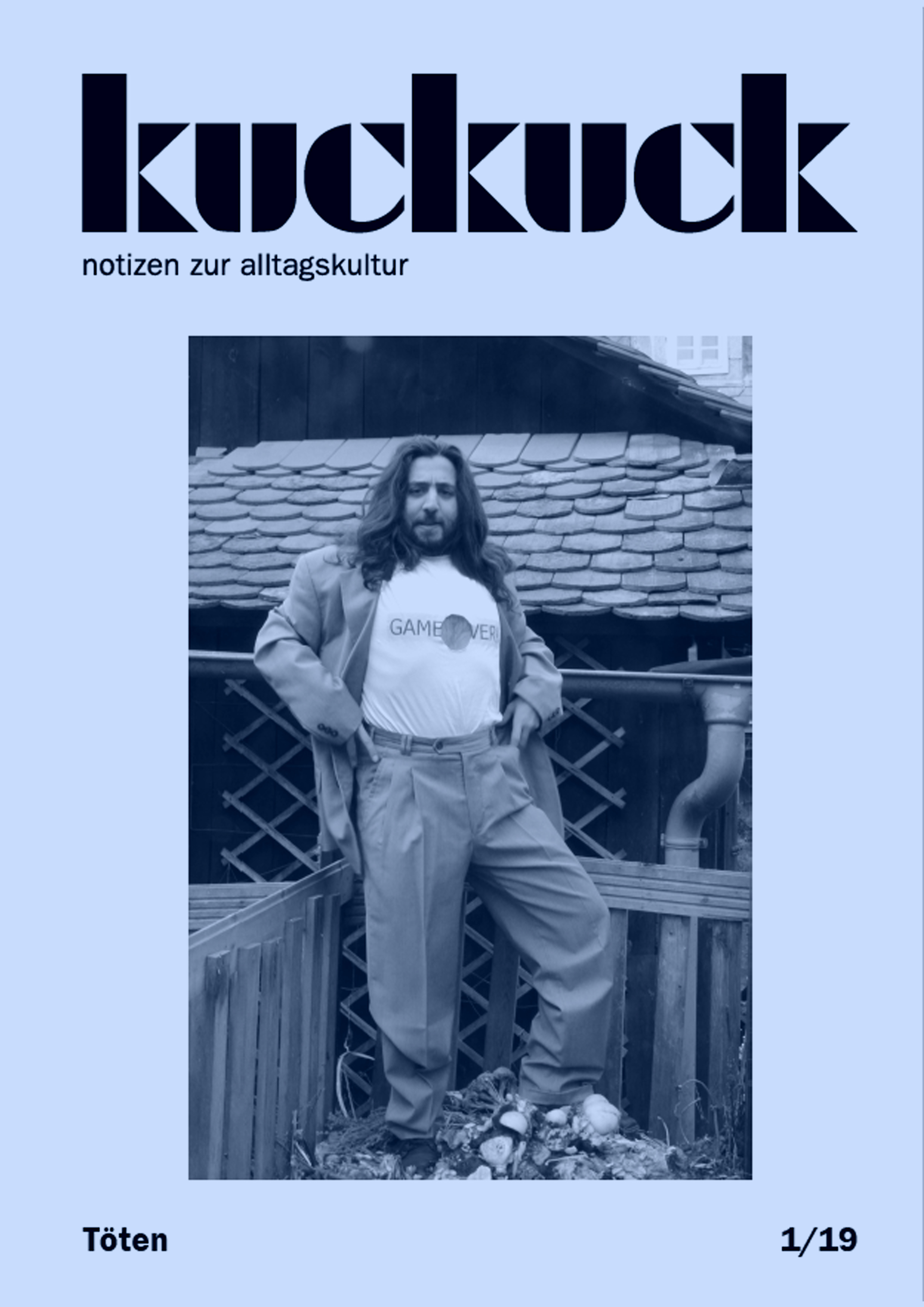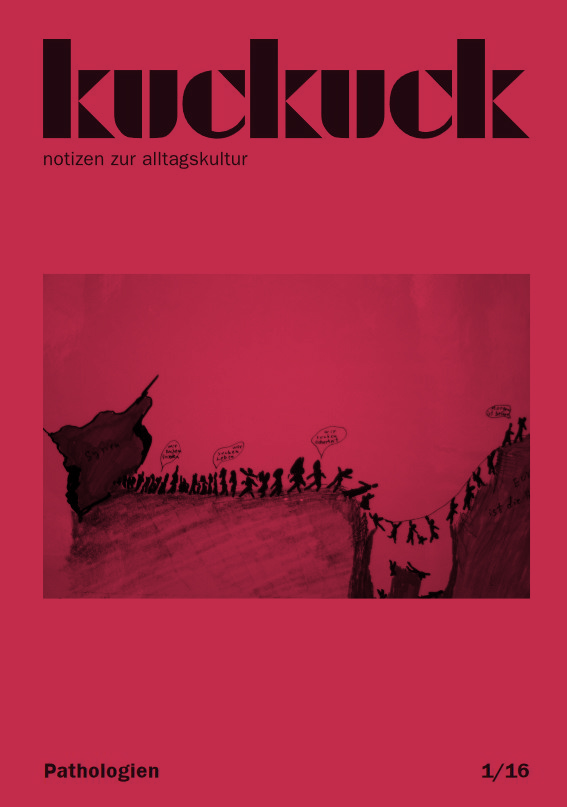
Anna Kurowicka
The Healing Power of (Hetero)Sexual Love: How Sheldon Cooper Was Cured of Asexuality
When Gayle Rubin first created her taxonomy of sexual behaviors that either belong in the ‘charmed circle’ or are relegated to the ’outer limits’ of what is ‘normal’0 in the realm of sexuality, she did not find an appropriate place for asexuality (2008 [1984]: 153). It is perhaps not surprising that monogamous and promiscuous straight and gay people, practitioners of BDSM, masturbators, and fetishists were all assigned a place on Rubin’s wheel of sexuality, yet people who are not attracted to others sexually were nowhere to be seen. While the line between ‘normal’ and ‘abnormal’ has been slowly shifting since 1984 when the article was written, as e.g. gays and lesbians in stable monogamous relationships and practitioners of BDSM have begun to gain access to the ‘charmed circle’, asexuals remain stigmatized for the most part. In recent years the asexual community has been questioning compulsory sexuality of the Western liberal cultures by drawing attention to the marginalizing assumptions that lie at its core and its discriminatory consequences for those who do not fit the sexual norm. The claim that all people are naturally sexual and that sex makes a person happy and healthy leads to the perception of asexuals and people who prefer not to have sex for other reasons as repressed, sick, or traumatized, all diagnoses that suggest the need for therapy.
This pathologizing representation of asexuality is also notable in popular culture, where asexual characters tend to be antisocial male geniuses, often with traits that situate them on the autism spectrum. Such a depiction of asexuality creates a highly problematic feedback loop: on the one hand it perpetuates the stereotype of people with mental disabilities as asexual by default, and on the other furthers pathologization of asexuality by locking it in with other socially undesirable traits. Since both antisocial behavior and asexuality are seen as problems, these stories are often narratives of normalization, in which the character is ‘fixed’ through the power of (hetero)sexual love. This article will focus on one such case, that of doctor Sheldon Cooper from the CBS’s sitcom The Big Bang Theory, who, over the course of the series, undergoes an evolution from an antisocial, obnoxious asexual to a more sensitive and flexible partner in a sexual and romantic relationship with a woman. This shift illustrates the problematic knot of compulsory (hetero)sexuality and anti-asexual prejudice which results in policing and normalizing non-normative social and sexual behavior.
Despite the strides made by the asexual movement in the last few years, there can be no question that lack of interest in sex, whether due to lack of sexual attraction or to politically, religiously, or personally motivated celibacy, is still stigmatized. The reason for that is the universally-held assumption that sex is good for you. It is supposed to be healthy for one’s mind and body (provided it is enjoyed in socially acceptable forms) and makes one happy. Both expert and popular discourses describe the multitude of health benefits stemming from a regular sex life, for the most part assumed to be heterosexual (Gupta 2011). If sex is what makes one healthy and happy, it is no wonder that anyone who does not participate in this area of life is presumed to be sick, unaware, repressed, or lost: all problems in need of a pharmaceutical or therapeutic solution. In fact, medicalization and pathologization of asexuality, as well as attempts to ‘cure’ self-identified asexuals, are some of the issues most commonly raised by members of the asexual community as examples of discriminatory practices (Brotto et al. 2010). In an attempt to explain this pervasive attitude, researchers have noted a phenomenon referred to as ’compulsory sexuality’, which encompasses “the assumption that all people are sexual”, and “the social norms and practices that both marginalize various forms of nonsexuality, such as a lack of sexual desire or behavior, and compel people to experience themselves as desiring subjects, take up sexual identities, and engage in sexual activity” (Gupta 2015: 132). Coined in reference to Adrienne Rich’s famous ‘compulsory heterosexuality’ (1980), compulsory sexuality is an attempt to shift the focus from the supposedly abnormal lack of interest in sex onto the systemic oppression faced by people who do not fit this assumption and are consequently marginalized in a world designed for sexual and romantic relationships.
The central position of sex in human life is also the result of the changing relation between sex and love. While sex and romantic love were considered to be separate entities before the modern times, nowadays, as Steven Seidman points out, “sex [is] reconceived as a medium to express, sustain and enhance love” and becomes “imbued with great personal and social significance as it now [carries] the burden of being responsible for personal and marital happiness” (1991: 91). Thus, sex is not only a healthy activity in its own right, but also a necessary component of love and a healthy romantic relationship, which puts romantic asexuals in a paradoxical position: while they may want the type of relationship that is legally and symbolically sanctioned by the society, without a sexual element it will always be considered defective. Even if long-term same-sex relationships have gained a degree of acceptance and even legal protection, the pinnacle of love life remains a monogamous heterosexual relationship. As Lauren Berlant notes, “conventional narratives and institutions of romance […] establish dramas of love, sexuality, and reproduction as the dramas central to living; and install the institutions of intimacy (most explicitly the married couple and the intergenerational family) as the proper sites for providing the life plot in which a subject has ‘a life’ and a future” (2012: 86, 87). Love and sex are crucial for creating a coherent narrative of one’s life and, when situated in a heterosexual marriage, are the building blocks of a politically and legally privileged form of social life. A life that does not fulfill the goals of futurity and reproduction is deemed a failure. This inescapable requirement results in significant consequences for those who opt out of this logic: non-normative queers, including asexuals, but also antisocial people for whom neither a romantic relationship nor sex are priorities.
In this article I will analyze the character of Sheldon Cooper from the TV series The Big Bang Theory in view of the phenomenon described above, where sexually and socially unruly individuals are disciplined into participating in the institution of heterosexuality. This sitcom produced by CBS is currently in its ninth season. Over the course of its run one of the main characters, Sheldon Copper, has changed significantly: while he starts out as a decidedly queer, antisocial and asexual genius, he eventually becomes more socially aware and open to sexual and emotional intimacy. I will argue that this shift is presented as a positive result of ‘domestication’ by his girlfriend and the gradual sexualization of both their relationship and Sheldon himself. As a result, the character’s asexuality and antisociality are mitigated as he is more fully integrated into proper social and romantic life.
The Big Bang Theory is the story of a group of four male friends, scientists and self-described geeks, and their next-door neighbor, an aspiring actress. In later seasons the cast is joined by two female scientists who quickly become love interests for the main characters. Most of the sitcom’s scenes are set in the apartment that Leonard Hofstadter shares with Sheldon Cooper, a theoretical physicist considered (by himself and others) the most intelligent member of the group. His complete focus on purely intellectual pursuit of physics is coupled with indifference when it comes to social life, including disdain for those less intelligent than him and disregard for polite behavior and even for his friends’ feelings. He is the embodiment of an ideal geek: his intelligence is of the highly logical and abstract type and he is obsessed with all the stereotypical markers of geekdom, including science fiction, role-playing games, collectibles, and other hobbies ascribed to passionate yet emotionally immature male loners. While his friends share most of Sheldon’s interests, they are presented as more engaged with the outside world, especially as they all look for relationships with women. Sheldon is unique in this respect because he does not have any sexual or romantic needs. When during a discussion of his potential proclivities his friends are asked what “Sheldon’s deal is? Is it girls? Guys? Sock puppets?” they admit that “[they] have been operating under the assumption that Sheldon has no deal” ("The Cooper-Nowitzki Theorem" 2008). Sheldon’s lack of any ‘deal’ when it comes to sexuality is one of the central themes of the series, until he meets his future girlfriend and begins a slow move toward a normative heterosexual relationship. His asexuality is strongly associated with other traits that can jointly be referred to as antisociality: inflexibility, inability to read emotions of other people and empathize with them, and disinterest in social norms and interactions. Sheldon is highly invested in the stability of his routine and the world around him and abhors change, which results in a need to control his environment, including the most unpredictable ‘human factor’: his friends. All these characteristics are clearly bound with asexuality as two elements of the archetype of a male genius who is divorced both from the social and practical realities of the world, and from his own body. Women and non-white people are typically sexualized by default so they cannot embody the stereotype of asexual cerebrality as easily as white men. This highly gendered and racialized figure may well be a privileged subject, but he is still considered abnormal and unhealthy, as the example of doctor Sheldon Copper suggests.
The assumed connection between asexuality and antisociality has broader social and cultural consequences when asexuals are assumed to be sick and people with disabilities – asexual by default. Eunjung Kim argues that this results in a mutual negation of asexuals and people with disabilities, where the former argue there is nothing wrong with them, and the latter insist that they are sexual (2014: 273). The cluster of Sheldon’s interpersonal characteristics described above hints at the possibility that the character is on the autism spectrum. While the creator of the show declared that they purposefully decided against explicitly identifying Sheldon as autistic (Murray 2013: paragraph 8), the character is often cited as an example of the recent cultural prominence of Asperger’s syndrome[1] and autism spectrum (Murray 2013, Subramaniam and Willey forthcoming: 13). Cultural figures of ‘autists’ have often been depicted as lacking emotions and ability to relate to others socially.[2] Such portrayal stems from the perception of autism as a ‘disorder of affect’, in which lack of affect was assumed to be both a symptom of the disorder and its cause, as early medical theories of autism linked it to having a cold, distant mother (Willey, Subramaniam, Hamilton, and Couperus 2015: 373). Interestingly, however, more recent depictions of autism emphasize not just the ability, but also the need of autists to experience love, thus potentially becoming normalized and (re)productive subjects (Willey, Subramaniam, Hamilton, and Couperus 2015: 370). While this shift in representation creates a space for those on the autism spectrum who desire a romantic relationship, it also reinforces the assumption that romantic love (coupled with sex in the most normative incarnation) is a universal human need; consequently, the very humanity of the people who do not experience it is questioned. The ability to experience emotions, of which the most valued one is romantic love, is popularly assumed to be a mark of ‘true humanity’, as movies and TV series about artificial life suggest. The highly logical, emotionally distant autists have often been relegated to the pantheon of not-quite-human subjects alongside robots and cyborgs. This dehumanizing depiction of autists, rooted in the perception of emotions as a proof of humanity, is undermined in the new narratives of autists looking for love, but at a significant cost for the queer subjects who are unable or unwilling to be healed through the power of (hetero)sexual love.
When Willey, Subramaniam, Hamilton, and Couperus describe the shift from the depiction of autism as a disorder of affect to the loving and loveable autist, they also stress the problematic gendered assumptions this change is based on and its further exclusionary potential (2015). The authors discuss one of the most prominent contemporary theories of autism etiology, the ‘extreme male brain’ theory, according to which typical male brains are focused on systematizing, while female ones are more concerned with empathizing (2015: 374). Autistic people’s brains are situated on the far-male end of the spectrum, which is supposed to account for their problems with reading and expressing emotions and their focus on logic (2015: 374). This theory reinforces biologized stereotypes of gender differences and perpetuates the idea that sexual complementarity and heterosexual love can bring back the ‘normal’ balance of male and female (2015: 376). Thus, ‘extremely male’ autists need the power of (hetero)sexual love to learn the importance of emotional side of life and return to the fold of society which is, in fact, exactly what happens to doctor Sheldon Cooper.
When Sheldon first meets his future girlfriend, Amy Farrah-Fowler, it is due to the meddling of their friends, who set up a profile for Sheldon on a dating website (“The Lunar Excitation” 2010). The resulting perfect match is Amy and, indeed, she seems to be a female equivalent of Sheldon: a neurobiologist who is often awkward or too straightforward in social interactions and claims to be uninterested in a romantic relationship. In time they grow to like and respect one another, but it is always Amy who pushes the relationship forward, both in terms of romantic gestures and sexual intimacy. She is very much interested in having sex with Sheldon and worries that lack of sex delegitimizes their relationship in the eyes of their friends (“The Love Spell Potential” 2013). Their dynamic quickly becomes one where Amy keeps trying to cajole or trick Sheldon into more intimacy and he keeps resisting or misconstruing these attempts, such as when they play doctor ‘Star Trek style’ (“The Launch Acceleration” 2012) or when she invites him for a train ride, which finally results in their first kiss initiated by Sheldon (“The Locomotive Manipulation” 2014). When they have sex for the first time, it is his birthday gift to her (“The Opening Night Excitation” 2015). This is not to say that Sheldon does not make these changes willingly or does not enjoy them; after they have sex, he admits he liked it more than he expected. Though his assertion that he is looking forward to her next birthday when they would repeat the experience very much suggests that he still considers sex a rare occurrence rather than a part of everyday life. Over the course of the series, Sheldon certainly becomes more comfortable with displays of physical affection towards Amy, but I would say that his portrayal remains consistent with asexuality. While he enjoys certain intimacies, he is rarely the one to initiate them, which supports the theory that he does not experience sexual attraction. The fact that he may take pleasure in sexual activity once he decides to do it, often for Amy’s benefit, need not affect the reading of Sheldon as asexual.
Concurrently with expanding the degree of sexual intimacy in the relationship, Sheldon is also undergoing an evolution in terms of emotional vulnerability, romantic attachment, and sensitivity to another person’s feelings. In other words, he is following the script of falling in love. While at first he resists even the designation of a boyfriend, his attitude slowly changes as he gets to know Amy better and comes to care for her. He proposes a ‘relationship agreement’ which, though strictly outlining the obligations and rights of each party in a very formalized form typical of Sheldon, does acknowledge that there is a relationship which terms need to be negotiated (“The Flaming Spittoon Acquisition” 2011). Eventually Sheldon not only admits that he loves Amy, but also gets her an engagement ring, thus signaling his readiness for serious commitment as well as willingness to follow the social conventions of heterosexual love (“The Prom Equivalency” 2014, “The Commitment Determination” 2015). These developments also bring about a gradual shift in Sheldon’s sensitivity to Amy’s needs and feelings as he opens up emotionally and begins to compromise on many fronts, from the intimate boundaries of the relationship to more practical matters. Over the course of his relationship with Amy, Sheldon’s traits, such as stubbornness and absolute inflexibility when it comes to his habits and hobbies, slowly soften and he becomes easier to live with not only for her, but also for his friends. Thus, falling in love is shown as the cause for a greater change in Sheldon: he becomes a better friend and arguably a better human being. Unfortunately, the implications of such a narrative are very problematic, as it suggests a clear-cut path to normalization of asexual and antisocial people through (hetero)sexualization and romantic coupledom.
As has been mentioned above, the assumption that autists may be loving and loveable undoubtedly has an emancipatory potential for some, but it also leads to further marginalization of those who are uninterested in a romantic relationship or unable to be in one. The same can be said about asexuals: while some enjoy romantic relationships and are able and willing to have sex with their partners, others do not. Compulsory sexuality coupled with the idealization of romantic love as the be-all and end-all of human life now also includes people who had previously been excluded from such expectations, which makes those who stubbornly do not fit in seem even stranger. After all, if love is good for everyone, including autists and asexuals, what kind of freak must one be to still resist it? The implicit purpose of opening up the sphere of romantic love to those socially and sexually different is not to broaden the limits and definitions of what love is and how it can be realized, but rather to normalize such people through the institution of heterosexual, romantic relationship. Thus, all rough edges are smoothed over: autists become more sensitive and sociable, asexuals come to enjoy sexual intimacy. They are incorporated in the social order and do not question its logic by the very fact of their queer existence. The implication is not only that antisociality and asexuality are problems to be solved rather than simply alternative ways of being in the world, but also that romantic heterosexual love can ‘cure’ them both in one fell swoop. Thus, people who insist on rejecting its healing power are pathologized further as the truly hopeless cases. Sheldon Cooper’s character arc on The Big Bang Theory is a striking example of the narrative of normalization due to heterosexual love. His character traits are depicted as flaws to be erased as he comes closer to the ever-elusive norm. His antisociality and asexuality are intertwined as two sides of the same coin: trouble relating to people in the appropriate way, whether it is the correct level of emotional connection, or of heterosexual desire. Amy’s love pushes Sheldon to appreciate sexual intimacy and at the same time become better at dealing with people. The two areas of change are in fact inseparable because only taken together do they prove Sheldon’s newfound normalcy, which can only be achieved when the correct social and sexual behavior coexist.
[1] While the new Diagnostic and Statistical Manual of Mental Disorders (DSM-5) removed the diagnosis of Asperger’s syndrome and replaced it with autistic spectrum disorder (ASD) to reflect lack of strict boundaries between autism and Asperger’s syndrome, the latter still functions in popular culture as a shorthand for a ‘less severe’ form of autism.
[2] Following Willey, Subramaniam, Hamilton, and Couperus, I use the term ‘autist’ to refer to the figure used to represent autism in culture and public discourse (2015).
References
Berlant, Lauren 2012. Desire/Love. New York: punctum books.
Brotto, Lori A., Gail Knudson, Jess Inskip, Katherine Rhodes, and Yvonne Erskine 2010. Asexuality: A Mixed Methods Approach. Archives of Sexual Behavior vol. 39(3), pp. 599–618.
Gupta, Kristina 2011. “Screw Health”: Representations of Sex as a Health-Promoting Activity in Medical and Popular Literature. Journal of Medical Humanities vol. 32, pp. 127-140.
Gupta, Kristina 2015. Compulsory Sexuality: Evaluating an Emerging Concept. Signs vol. 41(1), pp. 131-154.
Kim, Eunjung 2014. Asexualities and Disabilities in Constructing Sexual Normalcy. In Cerankowski, Milks ed. Asexualities: Feminist and Queer Perspectives. New York: Routledge.
Murray, Noel 2013. The Changing Face of “Nerds” (and Autism) in Popular Culture. For Our Consideration. The A.V. Club. Accessed May 2, 2013. http://www.avclub.com/articles/the-changing-face-of-nerds-and-autism-in-popular-c,91151/.
Rich, Adrienne 1980. Compulsory Heterosexuality and Lesbian Existence. Signs, Vol. 5 (4), pp. 631-660.
Rubin, Gayle 2007 [1984]. Thinking Sex: Notes for a Radical Theory of the Politics of Sexuality. In: Parker, Aggleton ed. Culture, Society, and Sexuality: A Reader. London and new York: Routledge, pp. 143-179.
Seidman, Steven 1991. Romantic Longings: Love in America, 1830-1980. London and New York: Routledge.
The Big Bang Theory 2007-present. Created by Chuck Lorre and Bill Prady. New York: CBS. Television.
———."The Cooper-Nowitzki Theorem." Season 2, episode 6. 2008.
———.”The Lunar Excitation.” Season 3, episode 23. 2010.
———."The Flaming Spittoon Acquisition." Season 5, episode 10. 2011.
———."The Launch Acceleration." Season 5, episode 23. 2012.
———."The Love Spell Potential." Season 6, episode 23. 2013.
———.“The Locomotive Manipulation.” Season 7, episode 15. 2014.
———.“The Prom Equivalency.” Season 8, episode 8. 2014.
———.”The Opening Night Excitation.” Season 9, episode 11. 2015.
———.“The Commitment Determination.” Season 8, episode 24. 2015.
Willey, Angela, Banu Subramaniam, Jennifer A. Hamilton, and Jane Couperus 2015. The Mating Life of Geeks: Love, Neuroscience, and the New Autistic Subject. Signs col. 40 (2), pp. 369-391.
Willey, Angela and Banu Subramaniam, forthcoming. Inside the Social World of Asocials: White Masculinity, Science, and the Politics of Reverent Disdain. Feminist Studies.

 Deutsch
Deutsch  English
English 
